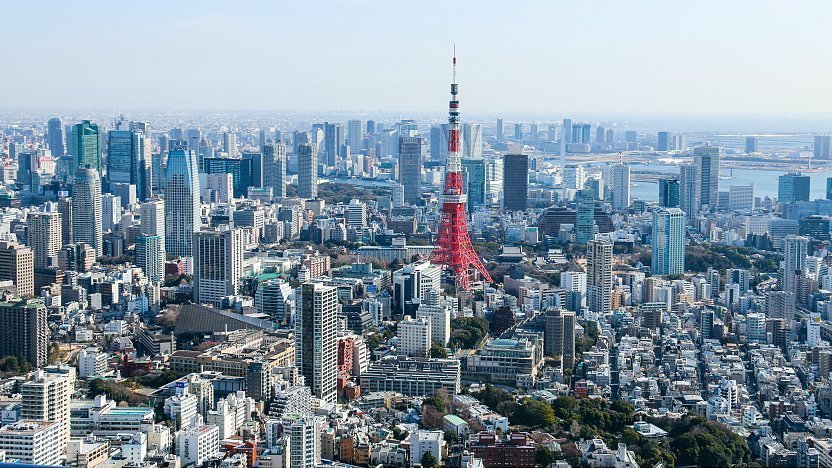Family-Friendly Tokyo Transfers: Stress-Free Travel with Kids
Ever wondered whether a stroller, a diaper bag, two children in tow, could easily negotiate Tokyo’s fast-paced transit system? You are not the only one. Tokyo is among the most fascinating cities in the world, but initially it can seem frightening for travelling families. The favorable news is Family-friendly Tokyo Transfers are not only feasible but also rather fun with proper planning and insider knowledge.
Let’s start with the first actions towards travel free from stress.
Why Tokyo Is More Friendly Than You Would Think for Families
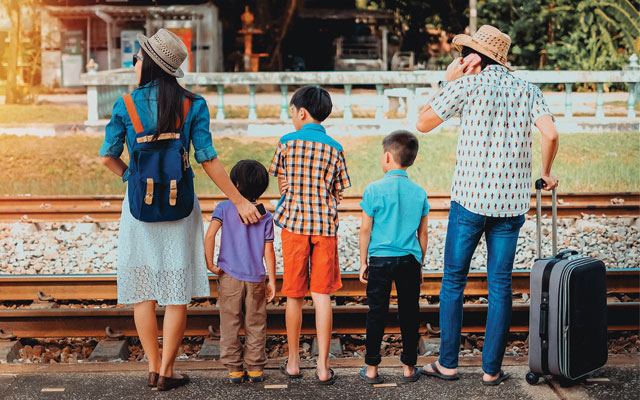
When people picture Tokyo, they usually see packed subways, flashing neon lights, and never-ending traffic. Although the city’s appeal stems from this, many tourists overlook another side: one in which the city subtly attends to families. From spotless, timely trains to well-marked stations and English-language helpful signage, Family-Friendly Tokyo Transfers are ingrained in the system; you just have to know where to look.
Trains Fit for Families
Elevators, escalators, and priority seating abound at most Tokyo train stations. Rush hour also features women’s and children’s only cars, which can provide a quieter setting should you be traveling alone with children.
Most train companies use apps or station displays to show real-time updates, stroller access information, even platform elevator maps. When you are juggling small children, that kind of convenience really helps.
Good Neighbours and a Safe Surroundings
Tokyo’s people’s friendliness and safety also help to explain why family travel wins there. Should you find yourself lost or struggling with bags, you should not be surprised if a stranger volunteers to assist. Crime is rare, and riding trains even late in the evening with your children is absolutely safe.
Tokyo’s Transportation System at a Glance (And Why Families Would Benefit)
At first, navigating Tokyo could feel overwhelming, but once you get the feel of it, it becomes second nature. An effective system of JR lines, subways, private railroads, and buses serves the city. Every one of them contributes to the Family-Friendly Tokyo Transfers puzzle.
IC Cards Simplify Everyday Life
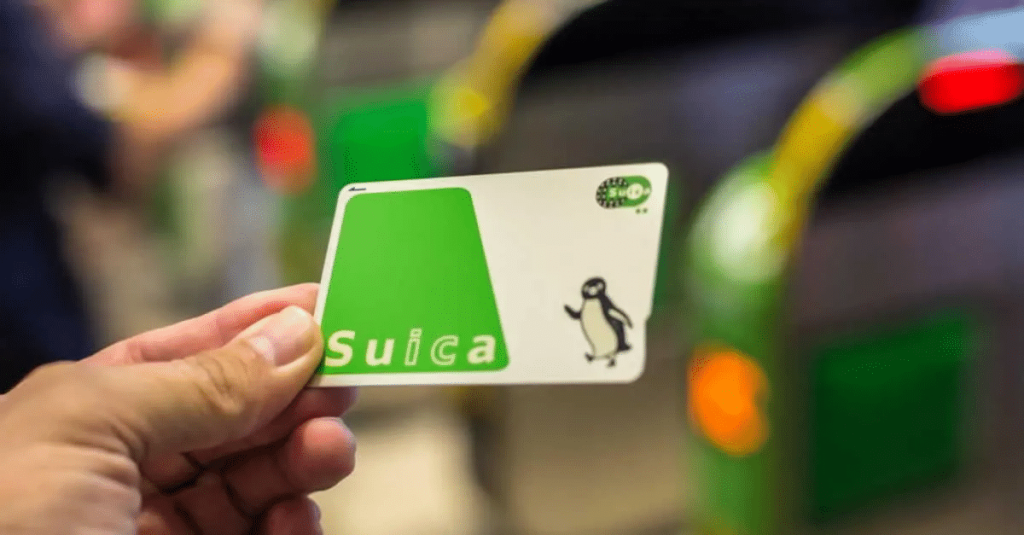
As soon as you arrive, first pick up a prepaid IC card such as Suica or Pasmo. These cards allow you tap in and out of buses, trains, even some stores or vending machines. Not necessary to worry about ticket machines or carry change close at hand for child management.
Better still, almost all train and subway systems accept IC cards regardless of the operator, so you won’t have to worry about deciphering difficult fare charts while carrying a sleeping toddler.
Strollers Welcome (With a Few Suggestions)
You are quite free to carry a stroller onto Tokyo trains. Most stations have designated elevators, and trains have open areas close to the doors where you might comfortably stroller-stand. When at all possible, avoid rush hours (7:30 AM–9:30 AM and 5:00 PM–7:00 PM). Trains get packed and navigating with children gets more difficult.
Pro tip: Always stand near the doors to exit quickly; fold your stroller if the train is packed.
Station Navigation Can Be Fun—Yes, Really
Tokyo train stations are spotless, vibrant, and sometimes bursting with mini adventures—like ice cream stands, themed cafés, or souvenir stores. Many of the big stations, including Ikebukuro, Tokyo, and Shinjuku, almost seem as cities in themselves. Knowing your departure before you arrive and allowing yourself more time will help you to make successful Family-Friendly Tokyo Transfers.
Examine signs closely; they are in both English and Japanese and some even feature color-coded paths to enable you access to restrooms, platforms, or elevators.
Airport to City Transfers: Best Advice for Families?
Especially after a long flight, landing at Narita or Haneda Airport with children can feel like stepping down on another planet. Still, don’t worry. From both airports, there are several family-friendly Tokyo transfers catered to your travel style, budget, and crew size of small children.
1. From Narita Airport (NRT)
Narita is roughly 60–90 minutes away from central Tokyo, but there are several kid-friendly routes into the city.
Keisei Skyliner

- Travel time: ~41 minutes
- Best for: Families staying in Ueno or Asakusa
- Perks: Reserved seating, clean bathrooms, luggage racks, Wi-Fi
Families looking to cut taxi expenses would find the Keisei Skyliner fast, neat, and roomy—ideal. You won’t have to search for a spot to sit with your children and bags if you reserve seats.
Narita Express
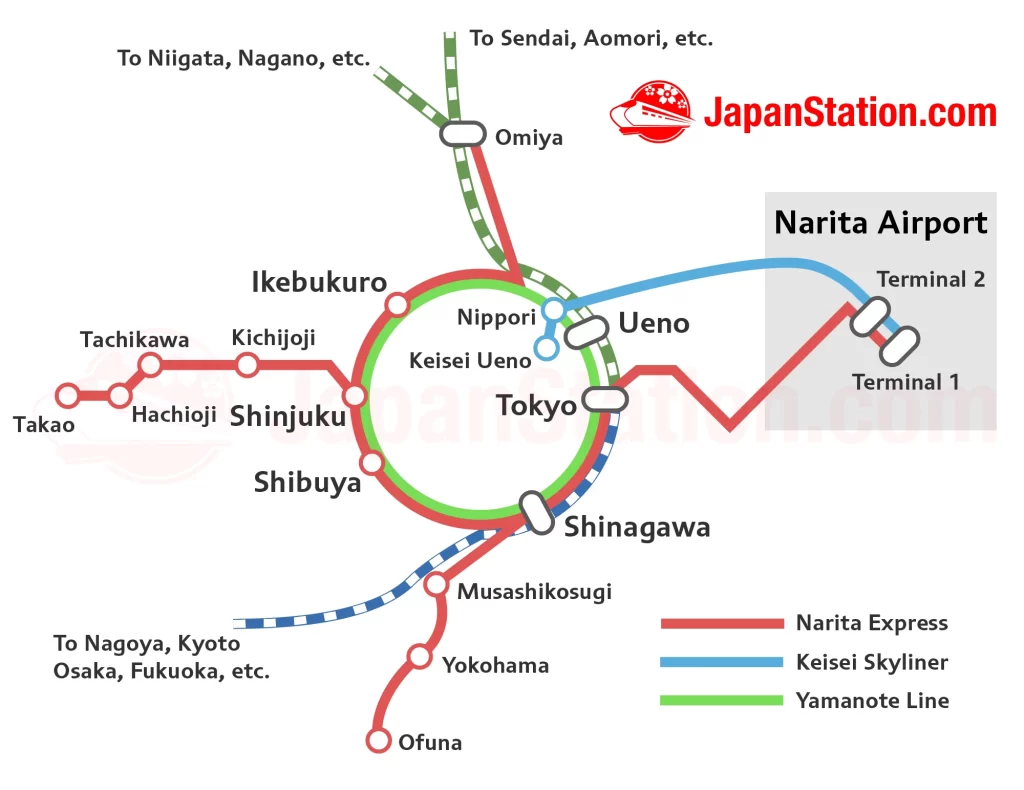
- Travel time: ~60 minutes
- Best for: Families heading to Shibuya, Shinjuku, Tokyo Station
- Perks: Direct to main city hubs, roomy seating, stroller space
Another great option is the Narita Express. Advance bookings allow you to enjoy onboard air conditioning and restrooms. Ask for seats close to luggage storage or with extra room.
Limousine Bus
- Travel time: 90–120 minutes (depending on traffic)
- Perks: Door-to-door drop-off, no train transfers, lots of room for bags
Families with lots of bags or staying at big hotels will find limousine buses best. Large families or those arriving late at night would find this to be the most leisurely choice. Children fall asleep fast, so parents can enjoy the journey without having to negotiate stations.
Taxi or Private Transfer
- Best for: Families with special needs, many small children, or newborns
- Cost: $180–$250 (flat rate, one way)
- Perks: Comfort, privacy, no transfers, direct to hotel
Although costly, for Family-Friendly Tokyo Transfers this is the pinnacle in convenience. To guarantee room for strollers and bags, schedule an advance van-style taxi or airport shuttle.
| Transfer Option | Best For | Travel Time | Cost (One Way) | Stroller-Friendly | Luggage Space | Direct to Hotel |
| Keisei Skyliner | Ueno/Asakusa travelers | ~41 min | ~$25 USD/adult | ✔️ | ✔️ | ❌ |
| Narita Express | Shibuya/Shinjuku/Tokyo Station | ~60 min | ~$30 USD/adult | ✔️ | ✔️ | ❌ |
| Limousine Bus | Families with luggage/hotel stays | 90–120 min | ~$30–35 USD/adult | ✔️ | ✔️ (under bus) | ✔️ |
| Taxi/Private Van | Families with infants or 4+ members | ~60–90 min | $180–$250 total | ✔️ | ✔️ | ✔️ |
2. From Haneda Airport (HND)
About thirty to forty-five minutes, Haneda is far closer to Tokyo; entering the city usually goes quite easily.
Tokyo Monorail + JR Yamanote Line

- Travel time: ~30–40 minutes
- Best for: Adventurous families with older children
- Perks: Scenic vistas, quick transfer to city center
For train-loving children, the Tokyo Monorail is exciting; it also makes simple connection to the Yamanote Line at Hamamatsucho Station. Seldom crowded and provides a view of Tokyo Bay.
Keikyu Line
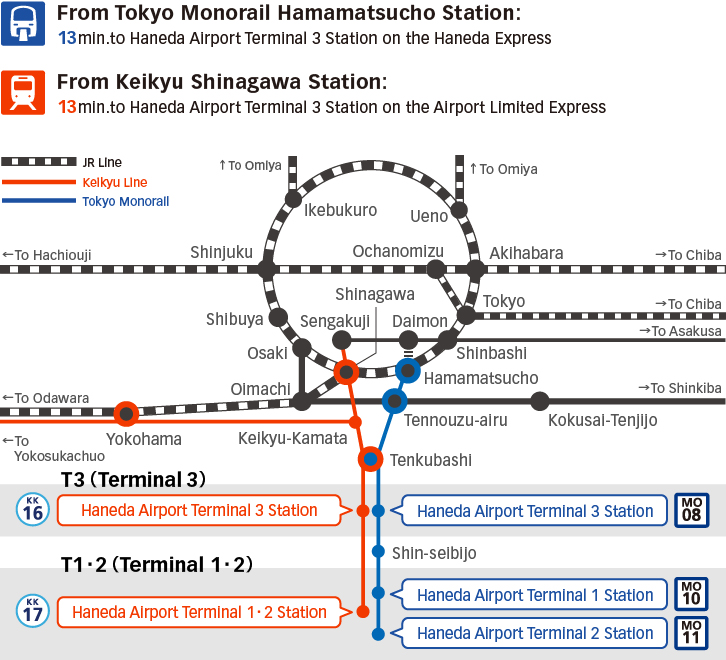
- Travel time: ~30 minutes
- Perks: Direct access to Shinagawa, simple transfer to other lines
Budget-conscious families will find best fit here. It’s economical, quick, and stroller-friendly. This is a fast and dependable option if you’re headed to central Tokyo.
Limousine Bus
- Travel time: 45–60 minutes
- Perks: No transfers, hotel drop-offs, comfortable ride
Like from Narita, the limousine bus makes easy Family-Friendly Tokyo Transfers. There is room to stretch out and the staff even assist with luggage loading.
Private Transfer or Taxi
- Cost: $70–$100
- Best for: Tired couples or those with young children
If you want no stress, this is a reasonable splurge when compared to Narita. Before your kids finish their juice boxes, you will be at your hotel.
| Transfer Option | Best For | Travel Time | Cost (One Way) | Stroller-Friendly | Luggage Space | Direct to Hotel |
| Tokyo Monorail + JR | Scenic route + kids who love trains | ~35–40 min | ~$5–7 USD/adult | ✔️ | ❌ (limited) | ❌ |
| Keikyu Line | Budget-friendly families | ~30 min | ~$4–5 USD/adult | ✔️ | ❌ (limited) | ❌ |
| Limousine Bus | Direct hotel drop-offs & large groups | ~45–60 min | ~$10–12 USD/adult | ✔️ | ✔️ (under bus) | ✔️ |
| Taxi/Private Van | Tired or late-arriving families | ~30–45 min | ~$70–100 total | ✔️ | ✔️ | ✔️ |
Getting About Tokyo with Children: Easy Travels for the Whole Family
It’s time to explore once you’ve got from the airport into the city! Here is when Family-Friendly Tokyo Transfers really shine. Once you know how to use Tokyo’s vast public transit system, which initially seems complicated, trust me—it’s among the easiest and safest in the world.
Allow me to dissect it here.
IC Cards Are Your Friend Right Now.
As soon as you can, grab a Suica or Pasmo card. Nearly all trains, subways, and buses across Tokyo—as well as in other cities like Osaka and Kyoto—these rechargeable cards run on. Having an IC card eliminates the need to stand in line at a ticket machine with a cranky toddler or fumble coins.
Just mark in and out at the gates. Children under six ride for free with a paying adult; children over six get discounted rates using a child IC card. One of the several ways Family-Friendly Tokyo Transfers keeps things reasonably cost-effective.
Steer Clear of the Rush and Appreciate the Ride.
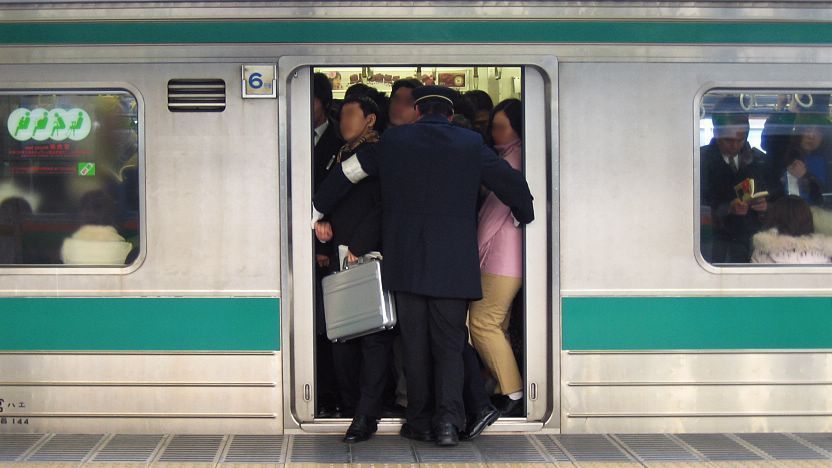
Usually between 7:30 and 9:30 AM and 5:00 and 7:00 PM, avoid the rush hour throngs if you are carrying a stroller. Trains can get quite packed at those times, thus maneuvering with children becomes difficult. The sweet spot is mid-morning to early afternoon; less packed, more laid back, and easier to locate seats.
At busy times, some train lines provide priority cars for women and children. Use them without hesitation if you are riding alone with your children.
Surprisingly Friendly Stations Are for Strollers.
Getting around crowded Tokyo stations with a stroller caused one of my main anxieties. Fortunately, most stations have wide ticket gates and elevators. Although bigger stations like Shinjuku, Tokyo, and Ueno can be crowded, they also provide elevator symbols that are easy to follow and thorough English and Japanese signage.
Better still, if you use a smaller or collapsible stroller. Near the doors, trains feature open areas where you could easily stand with your child. Once more, when it comes to Family-Friendly Tokyo Transfers, a little preparation goes a great distance.
Kindful Station Employees
Ask for help without thinking twice. Particularly if you are managing several children or a baby, station staff are quite polite and will go out of their way to help you. Many can help you find the closest elevator or the fastest path since many have only rudimentary English ability.
Families Discounts and Passes
Tokyo provides several excellent family-oriented transit passes:
- Tokyo Underground Ticket: Unlimited rides on Tokyo Metro and Toei Subway lines (24/48/72-hour)
- JR Tokyo Wide Pass: Covers trains to nearby areas including Nikko or Mount Fuji
- Children’s Discount: Under-sixes ride free; half-price fares for children aged six to eleven
Combine these with your IC cards, and Family-Friendly Tokyo Transfers get even more handy and reasonably priced.
Top Tokyo Attractions Divisible by Age Group
When you’re visiting with children of varying ages, not all attractions are created equally. Knowing where to go can save travel weariness, tantrums, and time lost. Targeting locations that fit your child’s age and energy level helps you plan smarter, so optimizing Family-Friendly Tokyo Transfers.
Regarding Toddlers (0–3 Years Old)

- Ueno Zoo: Shady paths, friendly animals, and surrounding parks
- Shinagawa Aquarium: Laid-back environment, excellent stroller access
- ASOBono! (Tokyo Dome): An indoor playground created for young children and toddlers
- Parks: Yoyogi Park, Arisugawa-no-miya Park, and Shinjuku Gyoen offer soft playgrounds and picnic areas
These are top choices for Family-Friendly Tokyo Transfers with young children since all of these locations are easily reachable with direct or single-transfer routes.
For Fourth to Sixth Year Olds in School
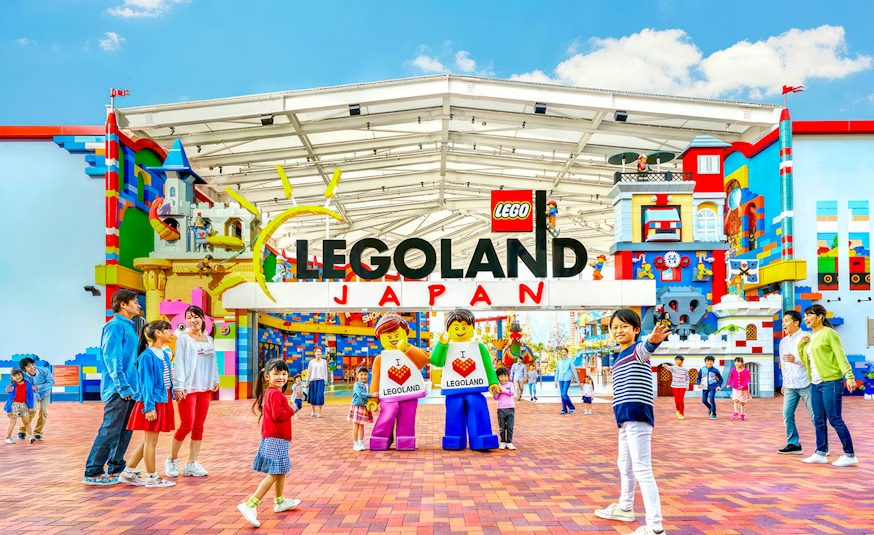
- Anpanman Children’s Museum: Themed rides and activities inspired by the popular anime
- Lego Discovery Center: LEGO-form Miniature Tokyo? Yes, kindly!
- Tokyo Toy Museum: Interactive fun, quiet play areas, wooden toys
- Sumida Aquarium (inside Tokyo Skytree): Ideal for shorter attention spans
For direct access to many of these locations—an integral part of effective Family-Friendly Tokyo Transfers—use subway lines like Hibiya or Ginza Line.
For 7–10 Year Olds (Young Kids)
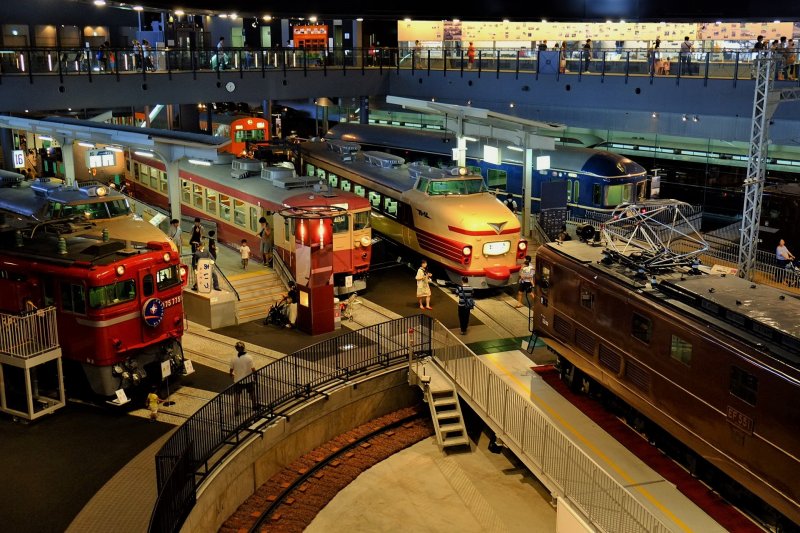
- Ghibli Museum: Dreamy world of animation and creativity (reservation only!)
- Miraikan: Space exhibits, simulators, and robots at the National Museum of Emerging Science
- Palette Town (Odaiba): Indoor ferris wheel, digital art, arcade games galore
- Railway Museum (Saitama): Worth it—just a 45-minute train ride from Tokyo Station
With rest areas, cafes, and interactive exhibits, these attractions often make Family-Friendly Tokyo Transfers much simpler to handle with inquisitive, active children.
Preteens & Teens (11+)
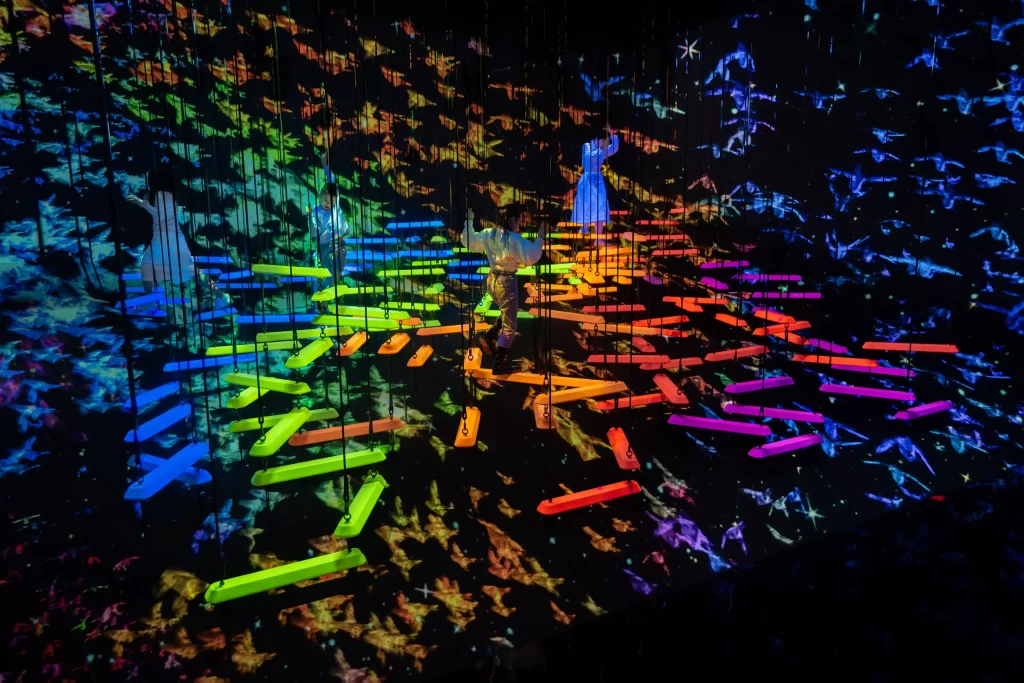
- TeamLab Planets: Immersive art installations they will truly post about
- Joypolis: Indoor VR games and simulation amusement park
- Harajuku + Takeshita Street: For youngsters drawn to fashion and pop culture
- Akihabara: Games, anime stores, maid cafes—just be ready for sensory overload!
Under your careful eye, of course, teenagers will love the freedom of riding the train itself; Tokyo’s safe surroundings make solo hops between stations a low-stress part of Family-Friendly Tokyo Transfers.
Stress-Free Transfers Among Principal Attractions
Knowing your destination now will help us to discuss logistics. How can one site lead one to the next without causing problems? Here’s how to keep your transfers family-approved, quick, and seamless.
DisneySea / Tokyo Disneyland
- Route: From Tokyo Station, ~15 minutes on the JR Keiyo Line to Maihama Station
- Tips: Station is stroller-friendly; on-site elevators and lockers abound
Travel early to avoid crowds; return after 7 PM. Use station maps—Keiyo Line platforms are far from main gates!
The Ueno Zoo and Museums
- Route: From Shinjuku or Shibuya, take JR Yamanote Line directly to Ueno Station
- Tip: Exit via Park Gate for quickest access. Bring snacks and go on weekdays to avoid school trip crowds. Ueno Park is shaded, features vending machines and bathrooms.
Odaiba
- Route: From Shimbashi Station, take the driverless monorail with front-facing seats kids adore
- Tip: The journey is part of the experience! Lunchtime trains are calm, and stops like Odaiba-kaihinkoen offer access to teamLab Borderless and LEGOLAND Discovery Centre.
Ghibli Museum
- Route: From Shinjuku, ~20 minutes on the JR Chuo Line to Mitaka Station, then take the Ghibli bus or a 15-minute walk through Inokashira Park
- Tip: Book tickets online before you arrive in Japan. Trains are family-friendly; Mitaka Station has ramps and clean bathrooms.
Suggested Apps and Tools for Mobile Families
Your secret weapon for perfect Family-Friendly Tokyo Transfers is digital tools. These tools simplify quick and easy planning and real-time adaptation.
Essential Travel Apps
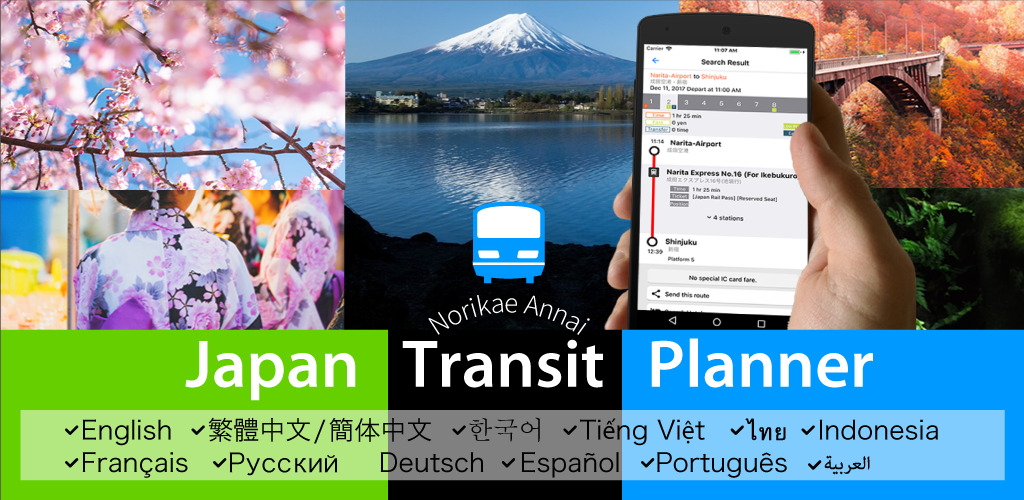
- Navitime for Japan Travel: Multilingual interface
Walking paths, bus, and train routes
Indicates which train car to board for nearest elevator! - Google Maps: Works well in Tokyo
Displays platform changes and live train times - Japan Transit Planner:
Filters for “no stairs,” “few transfers,” or “shortest walking path”
Perfect for families with young children and strollers
Station-Specific Apps
- JR East, Tokyo Metro, Toei Apps:
Include elevator locations, toilet maps, platform guides—great for stress-free station navigation
Translation & Safety Apps
- Google Translate: Use camera mode to read Japanese signs
- Disaster Preparedness Apps: Real-time weather, earthquake alerts, safety tips
Packing and Getting Ready Advice for Transfers: What to Bring for Easy Sailing?
An overtired toddler, a missing snack, or an elevator temporarily out of service can all cause havoc even with the most perfect Family-Friendly Tokyo Transfers. Everything depends on preparation; the correct packing technique can help to bring order out of anarchy.
The Tokyo Survival Kit for Families: Transportation
I always have these on hand for trips across the city with children:
- Snacks and drinks: Bento boxes, rice crackers, and juice boxes are real lifesavers.
- Wet towels and tissues: Useful for everything—from messy hands to mystery spills.
- Portable phone charger: All day you will be using transit apps, maps, and translating tools.
- Light blanket or shawl: Trains are air-conditioned year-round and may get cold.
- Entertainment: Download some cartoons, bring a coloring book or sticker sheet.
When you’re negotiating Family-Friendly Tokyo Transfers over extended sightseeing days, having these basics ready really makes a difference.
Use Coin Lockers and Luggage Delivery Services
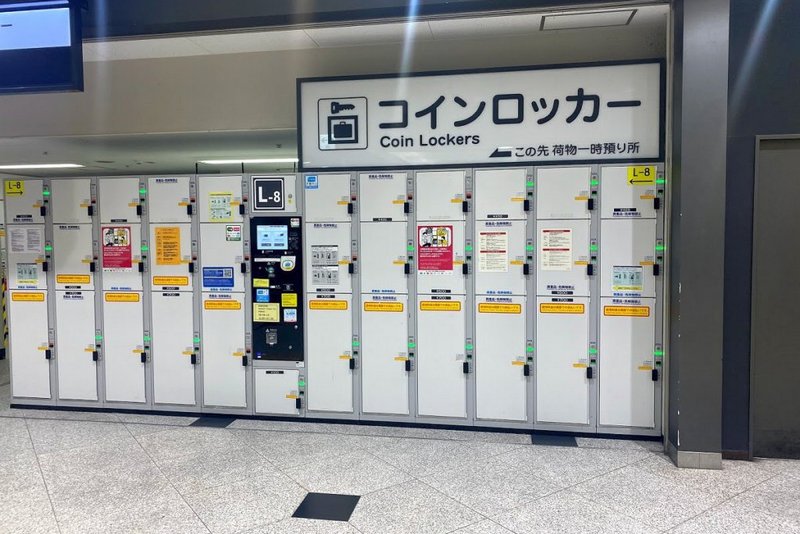
Tokyo stations have coin lockers in several sizes ideal for storing shopping bags or backpacks as you visit surrounding attractions. Larger stations including Tokyo, Shibuya, and Ueno abound in them, and English clearly marks them.
If you are moving between cities or heading to your hotel later, think about using a luggage forwarding company like Sagawa or Yamato. Usually by the next day, these companies bring your bags from hotels or airports all around Japan so you can travel light and concentrate on stress-free Family-Friendly Tokyo Transfers.
Typical Problems (and Their Solutions)
To be honest, even the most organized families experience the odd travel mishap. Here’s how to manage the most often occurring ones and still enjoy the ride.
Separating Oneself
Tokyo is quite safe, but losing sight of a child in a packed station can be horrific. Before you enter crowded areas, always talk about a meeting place and make sure your children know what to do should they get lost.
Many parents pin a note with the hotel name and phone number on their child’s clothes or use wristbands with contact details. Station personnel are taught to be helpful; lost children are usually quickly reunited with their families.
Tantrums and Meltdowns
Meltdowns can follow overstimulation, hunger, or tiredness. Fortunately, most Tokyo train stations feature quiet sections where you might regroup, nursing rooms, and baby care areas. Try to schedule downtime between activities and avoid packing too much onto one trip.
Limit your family to two large excursions daily, and keep Family-Friendly Tokyo Transfers short and sweet in between.
Masses and Train Delays
Although trains are usually quite regular, delays do occur. Use route alternatives and real-time updates available from apps like Navitime or Japan Transit Planner. Simply wait for the next train; most lines have them every few minutes if a train seems overly packed.
Particularly with children or strollers, always give an extra 10 to 15 minutes for walking time when you are moving between stations. Padding your calendar helps Family-Friendly Tokyo Transfers to feel like part of the journey rather than a sprint against the clock.
Sample Travel Routines for Families
Want some ideas? These are some ready-made travel plans specifically for family trips to Tokyo. All the while maximizing Family-Friendly Tokyo Transfers, they strike a mix between sightseeing and comfort.
Toddlers’ One-Day Easy Itinerary
- Morning: Ueno Zoo and park picnic
- Lunch: Ueno Station’s food court (lots of kid meals and high chairs)
- Afternoon: Train from Skytree to Tokyo Solamachi (shopping + aquarium)
- Evening: Early dinner and return before rush hour
Transfer tip: Use JR Yamanote Line—via Oshiage Station—between Ueno and Tokyo Skytree. Plan diaper changes before long transfers and steer clear of peak hour return trips.
Three-Day Trip Including Young Children
Day 1
- Morning: Ghibli Museum
- Afternoon: Inokashira Park beside paddle boats
- Evening: Stay in Kichijoji (quiet and local)
Day 2
- Morning: teamLab Planets
- Afternoon: Discover Odaiba + LEGOLAND
- Evening: Sunset at Odaiba Seaside Park
Day 3
- Morning: Tokyo Disneyland
- Afternoon: Nap in hotel
- Evening: Tokyo Station’s Character Street retail
Transfer advice:
- Mitaka via JR Chuo Line
- Odaiba via Yurikamome Line
- Book reserved seats on JR Keiyo Line for Disneyland return. This allows all of your Family-Friendly Tokyo Transfers to be under control with little effort.
Plan for Rainy Day
- Morning: Sunshine Aquarium in Ikebukuro
- Lunch: Underground shopping space at Ikebukuro Station
- Afternoon: Children’s Museum Anpanman or Tokyo Toy Museum
- Evening: Covered walkways and a rooftop garden in a department store
Transfer advice: Every indoor site has covered access and is linked to a main station. Use lifts and follow the station exit maps for dry, stroller-friendly paths.
Last Advice for Tokyo Stress-Free Family Travel
By now you have seen how Family-Friendly Tokyo Transfers are not only feasible but also essential components of the trip. On your first day, Tokyo’s public transportation system could seem like a maze, but with some preparation, you will be a master in no time.
When Should One Travel with Children?
Steer clear of late afternoon and Monday mornings. The sweet point for family-friendly, stress-free Tokyo Transfers is from 10:00 AM to 3:30 PM, when stations are quiet and traffic is light. Sundays and public holidays are quieter, although popular attractions could be busier.
In Japanese, How Would One Ask for Help?
Though most signs are in English, here are a few phrases just in case:
- “Erebētā wa doko desu ka?” – Where can one find the elevator?
- “Kono densha wa [Shibuya] ni ikimasu ka?” – Does this train stop at Shibuya?
- “Kodomo to issho desu.” – I am with children.
Appropriate Cultural Behavior to Remember
- On public transport, keep voices low. Trains are usually silent.
- Fold strollers on packed buses or trains, when possible.
- Use assigned seats if you’re flying with small children or elderly relatives.
- Avoid eating and drinking on local trains (exceptions: long-distance rides like Shinkansen).
